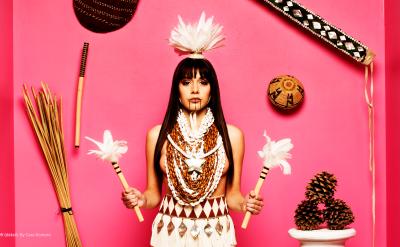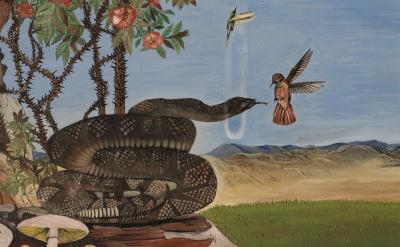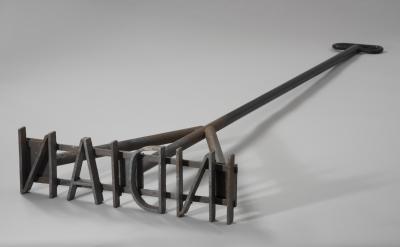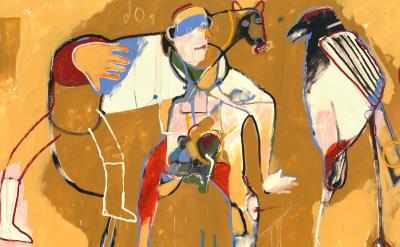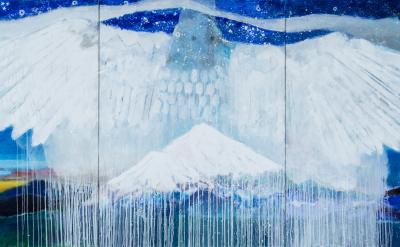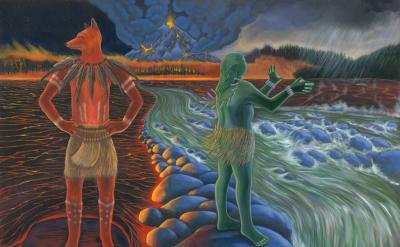
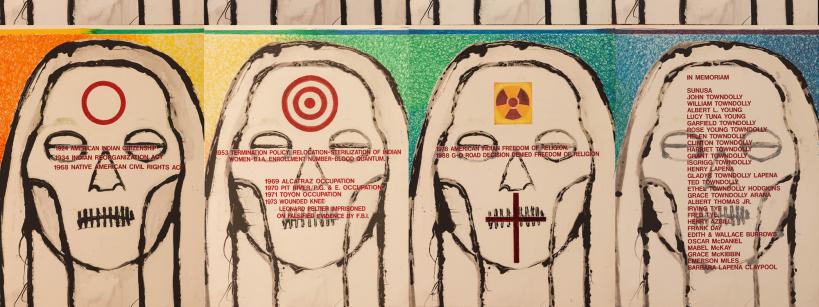
History of California Indians. Circa 1990
Frank LaPena
Nomtipom Wintu, 1937–2019, Lithograph, Collection of the Frank LaPena Trust
This set of eight hand-colored lithographs represents a timeline of significant events in California Native history. In the top four panels, the artist describes some of the most painful chapters in the post-contact period: the oppressive Spanish Mission system, the deadly epidemics, the state-sponsored genocide of the gold rush, and the brutal massacres of Native peoples both in and out of California. The bottom panels recount the later period of federal policy changes and direct actions taken by Native activists to improve Native lives and communities. In the last panel, LaPena honors his Native family and friends who have passed on.
When I Remember I See Red
About the Exhibition
Beginning with the occupation of Alcatraz in 1969, California became a beacon of creative freedom, individual expression, and social activism for Native peoples across the country. The region quickly transformed into a place where Native artists engaged with cultural diversity, historical traditions, and contemporary art to critique its colonial past. As a result, California became a site of artistic achievement within the broader story of Native art.
This exhibition features Native California artists who have used their work as a means of cultural resistance and renewal. Many have helped—and continue to help—restore aspects of ceremony, dance, language, and material culture once in danger of disappearing. Several facilitate workshops, teaching the next generation, and curate exhibitions consisting of work by their peers. Some of the pieces displayed are explicitly political in content, but in general aim more to reverse erasure and invisibility while reasserting Native values and sovereignty. Collectively, the artists in this exhibition practice a version of activism that combines elements of traditional and contemporary society to call out racial and social injustice and to heal communities through cultural renewal.
When I Remember I See Red was conceived by, and is dedicated to, Nomtipom Wintu artist Frank LaPena (1936–2019), a renowned art writer, curator, poet, traditionalist, and professor at Sacramento State University for 40 years.
“I believe that art is one answer to preventing the emptiness that the loss of culture or the indifference of society will impose. We are still alive.”
- Frank LaPena
Purchase the Exhibition Catalog from the Autry Store
Published in association with the Crocker Art Museum
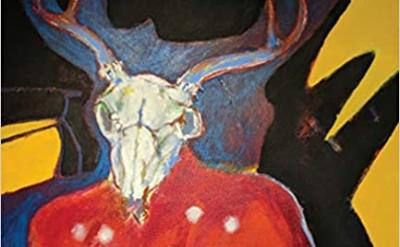
In Conversation with Gerald Clarke
Artist Conversation with Gerald Clarke (Cahuilla Band of Indians) and Amy Scott, Executive Vice President of Research and Interpretation, Marilyn B. and Calvin B. Gross Curator of Visual Art
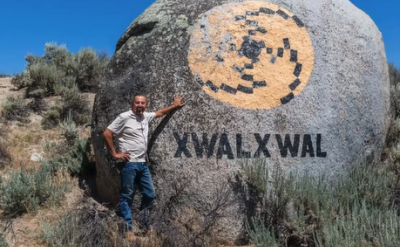
In Conversation with Lewis deSoto
Lewis deSoto (Cahuilla) speaks with Joshua Garrett-Davis, the Autry's Gamble Associate Curator of Western History, Popular Culture, and Firearms, discuss deSoto's work and popular culture storytelling of the American West.
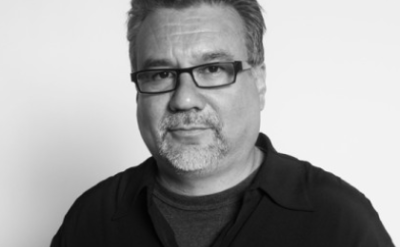
Sponsors
When I Remember I See Red: American Indian Art and Activism in California was organized by the Crocker Art Museum, Sacramento, CA, with support from the United Auburn Indian Community. This presentation at the Autry has been made possible in part by a major grant from the National Endowment for the Humanities.
Any views, findings, conclusions, or recommendations expressed in this exhibition do not necessarily represent those of the National Endowment for the Humanities.
